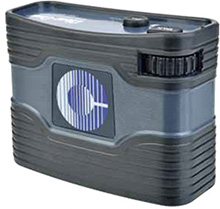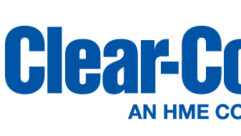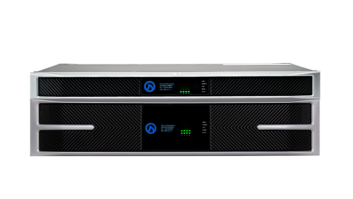

Clear-Com RS-701 Beltpack
Aug 20, 2014 9:49 PM, Reviewer: John McJunkin
Numerous production applications simply cannot function without coms, and these applications very frequently require coms every single day. Theater, education, broadcast, and church applications, in particular, can employ com systems not only every day, but sometimes for a substantial number of hours at a time. This amount of use and abuse puts a lot of wear on the equipment, so it’s very important for these organizations to choose equipment that is well designed, solidly constructed, and capable of taking the punishment dished out by heavy daily use. Clear-Com, on the short list of manufacturers to offer such sturdy products, have introduced the Encore analog party-line system, which includes the new one-channel RS-701 beltpack. I evaluated a simple Encore system and found that it performed very well and exhibited the sturdiness I have experienced with Clear-Com products in the past.
The Encore analog party-line system is a complete line of products, including multiple main, remote, user, and headset stations, interfaces, beltpacks, peripherals, microphones, headsets, and other accessories. The principal focus of this review is the RS-701 beltpack, but I wanted to offer some context, since the RS-701 does not exist in a vacuum; it’s useful only with other communications components. I will, however, limit this segment to just the hardware included in the simple evaluation system with which I spent time. At the center of the system was an MS-702 main station, to which were connected two CC-300 headsets and a single CC-400 headset, via two RS-701 beltpacks. The MS-702 is not Clear-Com’s most sophisticated main station, but it offers a useful level of sophistication for the aforementioned kinds of applications, including the capacity to support up to 40 beltpacks, 10 speaker stations, or 12 headset stations on two channels. The unit features a remote mic kill switch, external relay circuit, channel A-B linking, and line level program input.
The CC-300 and CC-400 are single- and double-ear versions of the same product: headsets with soft-padded, fully surrounding earpieces for ambient noise attenuation, offering 40Hz to 20kHz frequency response. Both headsets include a boom microphone that rotates 300 degrees to allow the user to place the mic on either side of the head. The rotating boom is also a clever mic on/off switch, and it includes a flexible goose-neck that allows optimal positioning of the unit’s hypercardioid mic. Additionally, the headset’s cable, boom, and earpads can be replaced individually by the user.
Let’s turn our attention to the main focus of the review: the RS-701 beltpack. The physical package is 4.5in. wide, just over 1.5in. thick, and just shy of 3.5in. high. These dimensions describe the enclosure in its natural orientation while in use, with controls on top and audio connections on bottom. The side of the enclosure that faces toward the user when it’s clipped to a belt is curved to accommodate the contour of the body. The side opposite of that is similarly curved. I’m certain that this shape is intentional for another function in addition to making the unit more comfortable on the hip. Looking at it end-on, it is reminiscent of the classic arch bridge design, which enables such bridges to bear tremendous amounts of weight. The intent is no different in the RS-701, as demonstrated in a YouTube video linked from Clear-Com’s website. In the video, a Jeep is driven over an RS-701 with no ill effect on the structure of the enclosure. There aren’t many applications in which a coms’ beltpack would likely be run over by a vehicle, but on the other hand, there are some, and the video boasts the unit’s sturdiness, which is obviously more than enough for most applications.
Atop the unit are a talk button and call button, both rubberized, and three LEDs—one illuminates when the unit is powered, one when the call button is pushed, and one when the talk button is engaged. Strictly speaking, the beltpack’s volume control is not located on the top face of the unit, but rather it’s a wheel-type control, embedded into the upper left corner of the enclosure as viewed from the top. A rubberized end cap that surrounds the entire top of the box (and which is mirrored on the bottom) effectively makes the volume knob recessed, and the knob’s placement also reduces the likelihood that the knob would be bumped or jostled by the user’s body or clothing. On the bottom of the unit, male and female three-pin XLR connectors are located that connect the unit into the coms system—either to a station or to another beltpack via daisy-chain. There is also a four-pin XLR connector into which connects the user’s headset.
There’s a metal belt clip on the hip side of the unit, and after loosening the screw that attaches it, it can be rotated to reveal a recessed tweeker-adjusted control for sidetone nulling and a DIP switch with six sliders. The first toggles between dynamic and electret condenser mic modes. The second toggles between low and high headphone output levels. The third toggles between fully silent and not fully silent at minimum level. The fourth turns all the LEDs off at all times. The fifth toggles “call-on talk mode,” which determines whether calls can occur when talk is on. The sixth toggles talk latch mode.
The very basic Encore system I evaluated was incredibly simple to set up, and that simplicity translates to more sophisticated systems if the user needs to scale up. After getting everything plugged in, I had both professionals and non-professionals put on the headsets to subjectively assess the audio quality and ease of use. I spent very little time instructing the non-pros on system operation, and they had virtually no difficulty catching on how to use the system. In my opinion, this is important for applications such as house of worship or community theater, in which untrained volunteers may be enlisted to help. Subjective assessment of audio quality was done with ambient noise levels varying from very quiet to very loud. The Encore system employs Clear- Com’s well-known speech-clarifying equalization contour, known as “Clear-Com Sound,” and it truly does improve intelligibility, even when ambient noise and music levels get high.
Aside from the audio quality, there are several other attributes that impress me about the RS-701. Obviously, as evidenced by video of a Jeep running over a unit with no ill effect, these beltpacks are very sturdily constructed. I also appreciate the recessed volume knob for the purpose of avoiding sudden level changes caused by a bumped knob. The unit’s endcaps are slightly rubbery, making it easy to grasp and helping to keep it in position on the user’s hip. The ergonomic curvature around the hip also contributes to keeping the unit in place. The rubberized talk and call buttons are easily identified by tactile means; the user doesn’t need to look at the beltpack to determine which button they’re pushing— the talk button is rectangular, and the call button is round.
As I said before, Clear-Com is on the short list of world-class coms manufacturers, and there’s a reason for it. They offer sturdy products that deliver quality audio, and the RS-701 beltpack is no exception. It’s worth a look if you’re in the market.
John McJunkin is the principal of Avalon Podcasting in Chandler, Ariz., and produces and co-hosts a top-rated morning radio talk show in Phoenix. He has consulted in the development of studios and installations and provides high-quality podcast and voice production services.
PRODUCT SUMMARY
COMPANY: Clear-Com | www.clearcom.com
PRODUCT: RS-701
PROS: Very sturdy, great audio intelligibility, common-sense ergonomics
CONS: None to speak of
APPLICATIONS: Theater, education, broadcast, house of worship
PRICE: $283.50
SPECIFICATIONS
MIC TO LINE (WITHOUT LIMITER) FREQUENCY RESPONSE: 280 – 15kHz ± 3dB
MICROPHONE OUTPUT TO LINE
• Audio Level (-50dBm Electret input): -9dBm
• Distortion: <0.1%
• Signal to Noise: >65dB
• Clear-Com Sound: Yes
FREQUENCY RESPONSE
• Line to Headphone: 150 – 20k Hz ± 3dB
HEADPHONE INPUT FROM LINE
• Audio Level (-9dBm Electret input): 3.5dBm
• Distortion: <0.5%
• Signal to Noise: >50dB
EARPHONE TO MIC
• Crosstalk: >80dB
SIDETONE
• Adjustment Range (-80db mic input): >45dB
OPERATING TEMP RANGE: 0˚C – 70˚C (32˚F – 158˚F)
STORAGE TEMP RANGE: 0˚C – 70˚C (32˚F – 158˚F)
RELATIVE HUMIDITY: 0 – 90%, Non-condensing
DIMENSIONS: 3.4 x 4.5 x 1.7in. (86 x 114 x 43mm)
WEIGHT: 0.66lbs. (0.30kg)










